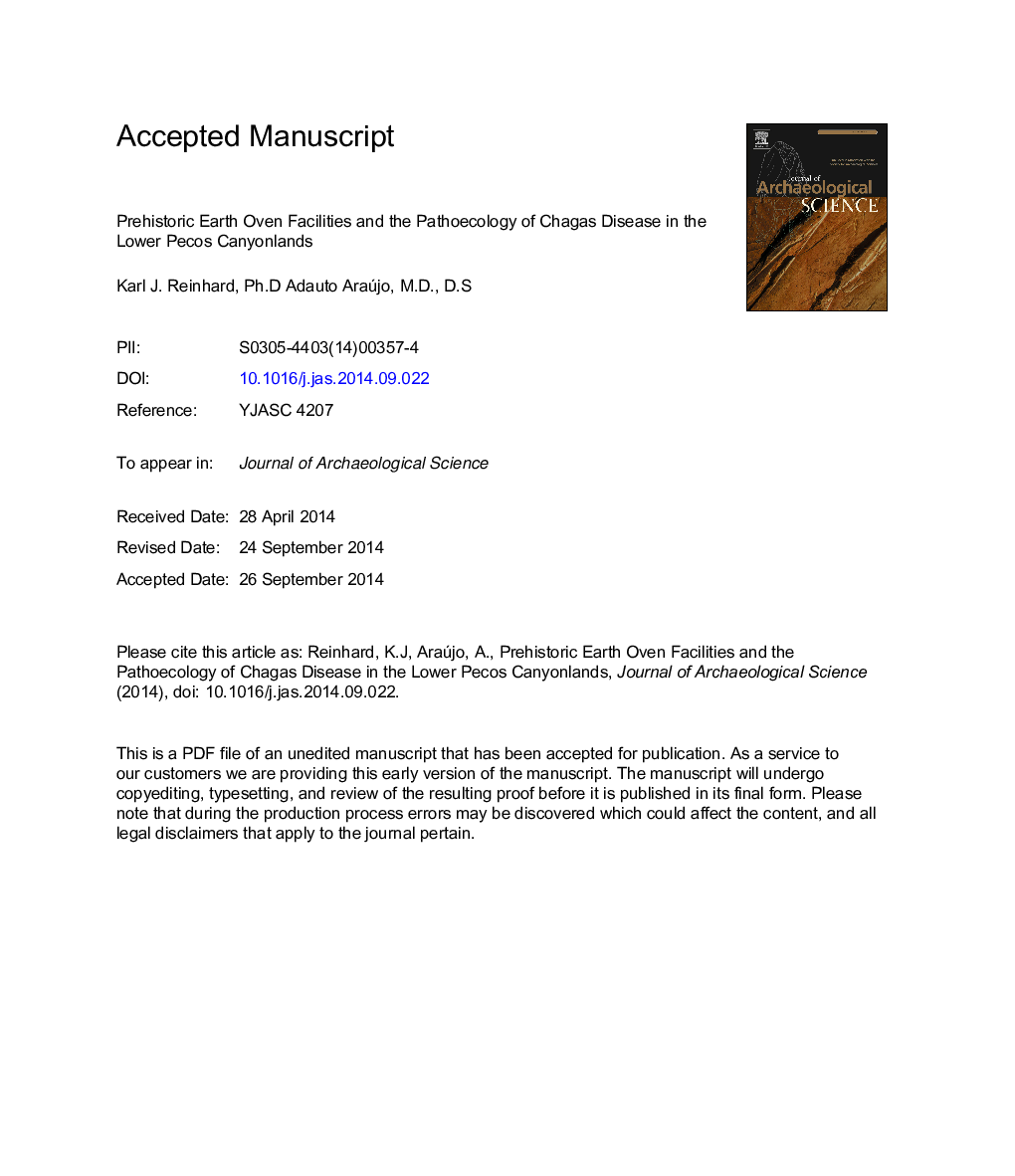| Article ID | Journal | Published Year | Pages | File Type |
|---|---|---|---|---|
| 7442527 | Journal of Archaeological Science | 2015 | 37 Pages |
Abstract
Understanding the endemic region of a disease is part of developing a concept of the disease's natural history and its threat to human health in both ancient and modern times. Chagas disease is caused by the parasite Trypanosoma cruzi and has recently been identified as an emergent disease in North America. Ancient endemicity and reemergence has been demonstrated by an examination of a mummy found on the border between Coahuila, Mexico and Texas, USA. This mummified man, who died over 1000 years ago, exhibits the gross pathology of megacolon, which is consistent with Chagas disease. We are now exploring the human behavior that resulted in this parasitic infection. T. cruzi infection exists in a sylvatic cycle involving woodrats (Neotoma spp.) and triatomine insects (Triatoma spp.) in the lower Lower Pecos Canyonlands. The Archaic subsistence strategy may have impacted this life cycle directly through predation on woodrats and through the construction of baking pits. This would have expanded the habitat suitable for both woodrats and triatomine insects. We are proposing that archaeologists develop field methods to test this hypothesis.
Related Topics
Physical Sciences and Engineering
Materials Science
Materials Science (General)
Authors
Karl J. Reinhard, Adauto Araújo,
